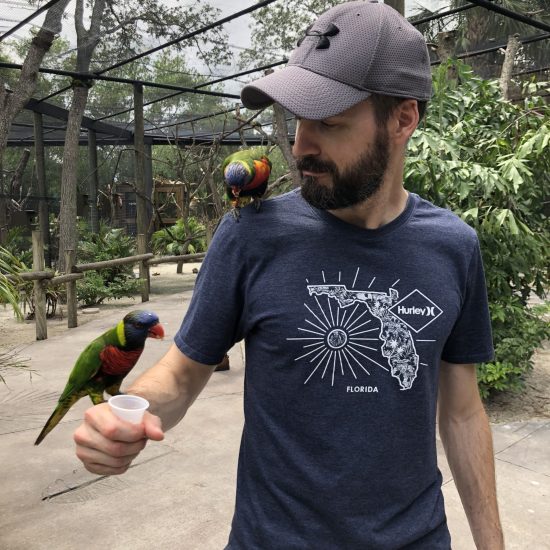The pitcher throws the ball and the batter hits the ball. It sounds simple enough, but as Dr. Ian Malcolm again graces the silver screen, we’re reminded of his niche of mathematics: Chaos Theory. One underlying premise of Chaos Theory is that complex systems are highly sensitive to minute differences in their initial phases, such that accurately predicting the outcome, even when given nearly identical inputs, is impossible.
When a round ball traveling 95 mph is struck by a round bat the results will vary widely even when the exit velocity and launch angle of two batted balls are essentially identical. This is what expected statistics attempt to describe; what was most likely to happen to a batted ball based on the consolidated results of all previous batted balls with the same flight characteristics. It’s an imperfect science, but can still be a helpful tool in the fantasy baseball arsenal.
We know that pitchers have some level of influence over batted ball qualities like exit velocity and launch angle. This is achieved through pitch sequencing, tunneling, spin rate and movement, pitch location, etc. Once the bat meets the ball though, chaos reigns, and any sense of “control” over the outcome is largely abandoned to fate. Here are three starters who thus far have found the fates of their batted balls to be less than friendly, and what that may mean for the fantasy value of each moving forward.
xStats: Underachieving SP
Alex Cobb SFG
Alex Cobb was featured in the first underperforming pitchers article back in May and, unfortunately, he’s still the poster boy for bad batted ball luck. No other fantasy-relevant pitcher has such a large gap between poor results and superb expectations. Look at almost any advanced metric and Cobb’s performance so far this year would lead you to believe he’s performed like a true ace. An elite 65.4% ground ball rate combined with 11.23 K/9 deserves far better than a 5.74 ERA and 1.49 WHIP.
Currently on the IL with a neck strain but slated to face live hitters this week, Cobb would make for an excellent stash in leagues with IL slots. He seems likely to return to the Giants rotation by early July. Health could remain an issue throughout the season, but the bump in velocity Cobb exhibited in spring training held through his first 37.2 IP of the season. Combine everything already mentioned with the pitching environment and coaching staff in San Francisco and there still exists the possibility of Alex Cobb pitching like a top-20 SP, even if health allows it only in short spurts.
Cobb is an excellent target for a bounce-back 2nd half of 2022 and he could be cheaply available in trade or even from the waiver wire in shallow leagues.
Aaron Ashby MIL
Aaron Ashby’s underlying metrics are eerily similar to Alex Cobb’s. Ashby generates an elite ground ball rate of 64.2% (Cobb 65.4%) with an 11.01 K/9 (Cobb 11.23 K/9). Their chase and contact rates are also close. Ashby carries the advantage in velocity but falls short on control as seen in his double-digit walk rate of 10.3%. Now a regular in the Brewers’ rotation due to the injuries sustained by Freddy Peralta and Brandon Woodruff, Ashby has the opportunity to provide significant fantasy value for the remainder of the season, but could ultimately face innings limitations late, like Brewers’ starters did last year. The time to take advantage is now.
As a young pitcher with an elevated walk rate, Ashby could continue to struggle with consistency. This is evident in the earned run totals from his seven starting assignments; 0, 0, 1, 1, 4, 6, 6. The whole package carries worthy upside though, and Ashby’s solid results so far in 2022 could have been even better. The highs will help win weeks in H2H formats, but the lows may sting. Better than a streamer but not quite a must-start, Ashby is best deployed against all but the worst matchups.
Zach Eflin PHI
Zach Eflin feels like he’s been a fantasy “sleeper” for years now, but the surface-stat upside that has previously only been hinted at by underlying metrics has quietly emerged this year. Eflin’s 3.76 ERA and 1.18 WHIP have been valuable to us, but even though the xStats say the results could have been better, the total picture isn’t quite as rosy.
Eflin’s excellent control (2.13 BB/9) helps him maintain a safe floor in WHIP, but with a meager strikeout rate of only 7.69 K/9 Eflin will always be more dependent on BABIP luck than most pitchers. The Phillies’ team defense should give us pause then, as it rates poorly no matter what metric is used. Eflin’s ground ball rate of only 41.8% looks worse when you consider his HR/FB rate of 8.1% is significantly lower than his career mark of 14.1%.
While healthy, Eflin should continue to be a useful fantasy option in deeper leagues and a high-quality streamer in shallow leagues. He’s the type of pitcher to fill out a fantasy rotation though, not lead one. Tread with caution if you’re looking for an every-week starter.
Photos by Ian D’Andrea (https://www.flickr.com/people/143615892@N05) and Photo by Larry Radloff/Icon Sportswire | Adapted by Justin Paradis (@JustParaDesigns on Twitter)

